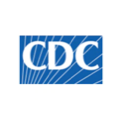21st Century Integrated Digital Experience Act - 2020 Report to OMB and the Public on Modernizing Agency Websites
Background
Section 3(d) of the 21st Century Integrated Digital Experience Act (21st Century IDEA)1 requires the head of each federal executive branch agency to report annually (through 2023) to the Director of the Office of Management and Budget (OMB) and the public on the agency’s progress to implement the requirements of the Act, and modernize their websites and digital services. The information below details the efforts of the U.S. Department of Health and Human Services (HHS) to modernize the Department’s websites and digital services in 2020.
HHS Efforts to Date
Before IDEA became law in December 2018, HHS agencies and offices were working to develop a Department-wide Digital Communications Strategy with the mission of instant and impactful digital communications. Building on our work in 2019, HHS focused in 2020 on examining our impact, continuing to modernize to serve the public, and assessing agency and office budgets to support communications staff in improving the digital experience for customers. During the COVID-19 pandemic, HHS agencies and offices were called upon to be more responsive and engaged with the American public than ever before. We delivered instant and impactful digital communications for our customers.
1. Response to the COVID-19 Pandemic
COVID-19 monumentally changed not only how HHS works, but also the Department’s relationship with the public. Americans looked to HHS for real-time updates and guidance in a time of uncertainty and fear, and HHS delivered. Since the pandemic began, HHS websites represented between 30 and 50 percent of all government traffic. In March 2020, CDC.gov handled over 1 billion pageview requests, 22 percent of all federal web traffic. By optimizing CDC.gov’s infrastructure and content delivery network for massive spikes in traffic and employing digital first and user-centered design principles to the website, CDC was able to get critical, life-saving information out to the public in a time of national emergency. HHS’s Office of the Assistant Secretary for Public Affairs (ASPA) managed over 1,025 coronavirus-related updates to HHS.gov and created a COVID-19 website hub for HHS. ASPA used user feedback to continually update and improve COVID-19 communications on the web and in social media, co-led federal-wide COVID-19 web coordination, and coordinated digital communications teams across HHS related to COVID-19 messaging to meet the public’s needs.
2. Website Modernization and Measurement Efforts
In 2020, HHS took several important steps toward website modernization. Some key HHS websites began to adopt U.S. Web Design System design principles, creating more accessible and impactful websites. HHS continued efforts to publish content aligned with the Plain Writing Act of 2010. In October 2020, the Center for Plain Language graded HHS as the only federal agency to receive an “A” for writing quality in its Federal Plain Language Report Card.2
HHS also conducted its first extensive combination budget and IDEA compliance data call to transparently quantify current costs for meeting user needs, website modernization tenets of IDEA, and instant and impactful communications. HHS will use this information to show the relationship of budgets to impact and to guide future budget requests to comply with IDEA and meet strategic goals. HHS embarked on extensive outreach to track all its unique and active websites in 2020, getting the Digital Analytics Program code onto Department websites, with a plan of using this information to automatically assess future compliance with IDEA. HHS has 955 unique and active websites, with several key websites actively using customer feedback to regularly assess and improve content and functionality. These websites and other digital communications platforms are maintained by about 900 FTEs. In the FY20 agency and office data call, HHS received 845 responses (almost 90 percent of all sites). HHS sites made substantial progress since 2019, with particularly large improvements in 508 compliance, searchability, user-centered data, and mobile-friendly (see Appendix Figure 1 for details). HHS’s Digital Communications Governance Council is using this information to roadmap and assess continued strategic modernization funding, staffing, resourcing, training, impact assessments and prioritization. Not including FTE salary costs (about $80M), digital communications efforts cost HHS about $410M to maintain annually. These costs include operations and maintenance of websites, social media, email newsletters, phone apps, chatbots, etc.
3. Agency Success Stories
HHS agencies and offices continue to make progress on implementing the Digital Communications Strategy and modernizing to meet IDEA. Three efforts from FDA, CDC, and NCI showcase recent modernization successes and impacts. Data-driven approaches have trimmed 100,000 pages and files from FDA.gov, have led to a website consolidation and training effort at the National Cancer Institute and have driven user-centric impactful communications successes at CDC. (See Appendix Figure 2). HHS continues to lift up these successes and provide support to agencies and offices to report their progress on improving the customer experience and identifying ongoing needs for achieving goals and objectives related to the Digital Communications Strategy and IDEA.
4. Digitization of Forms
As required in IDEA Section 4, the Office of the Chief Information Officer (OCIO) is developing an inventory of forms and their digitization status.
Appendix
Figure 1: IDEA Data Call Findings
| IDEA Requirement Question | Answer Format | FY19* | FY20~ |
|---|---|---|---|
| Is your website 508 compliant? | % “Yes” | 63% | 92% |
| Does your website contain any overlapping content? | % “No” | 83% | 93% |
| Does your website contain a search function? | % “Yes” | 48% | 77% |
| Is your website provided through a secure connection (HTTPS)? | % “Yes” | 90% | 99% |
| Does your site make use of data-driven usability? | % “Yes” | 58% | 78% |
| Is your website mobile-friendly? | % “Yes” | 68% | 86% |
| Is your website transactional? | % “Yes” | 37% | 33% |
| Which classifications apply to your website's branding and design? | % Both “Has a consistent appearance” and “Compliance with USWDS and/or adheres to general website user interface/user experience best practices” | 45.6% | 72.9% |
*Based on 1,081 data call responses.
~Based on 845 data call responses.
Figure 2: Select Agency Success Stories
| Agency | IDEA Requirement and Modernization(s) | Impact |
|---|---|---|
 |
In April 2019, FDA.gov implemented Drupal as its content management system. In preparation for launching the new site, the FDA digital team completed several modernization initiatives to improve the digital experience for visitors:
|
|
 |
|
|
 |
|
|
- 1. Public Law 115-336, 132 Stat. 5025-5028.
- 2. For more information, see https://centerforplainlanguage.org/2020-federal-plain-language-report-card/.